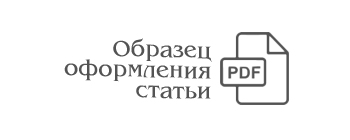ВОСПРИЯТИЕ СТУДЕНТАМИ ИСПОЛЬЗОВАНИЯ СОЦИАЛЬНЫХ СЕТЕЙ (INSTAGRAM) В КАЧЕСТВЕ ИНСТРУМЕНТА ПИСЬМА В КЛАССЕ АНГЛИЙСКОГО ЯЗЫКА
DOI:
https://doi.org/10.55956/KJJK1691Ключевые слова:
Instagram, социальные сети, навыки письма, восприятие студентовАннотация
Целью данного исследования является изучение и понимание того, как студенты воспринимают социальные сети как инструмент письма в условиях класса, уделяя особое внимание изучению английского языка. В сегодняшнюю цифровую эпоху платформы социальных сетей стали повсеместными, влияя не только на личное общение, но и на образовательную практику. Особое внимание уделяется тому, как эти цифровые инструменты могут помочь в развитии навыков английского языка. Обзор литературы подчеркивает растущую интеграцию технологий в образование и углубляется в потенциальные преимущества и проблемы, связанные с включением социальных сетей в традиционную учебную среду. Среди различных платформ Instagram выделяется благодаря своему визуальному формату и способности стимулировать творчество и вовлеченность, что делает его многообещающим инструментом для улучшения изучения английского языка. Данное исследование стремится обеспечить детальное понимание преимуществ и ограничений использования социальных сетей в качестве педагогического инструмента, особенно в отношении вовлеченности студентов и развития языковых навыков. Получая представление об отношении и подходах студентов к использованию социальных сетей в качестве инструмента письма, это исследование направлено на то, чтобы вооружить преподавателей практическими стратегиями для эффективной интеграции этих платформ в учебные программы по изучению языка. Конечная цель — улучшить образовательный опыт, сделав его более релевантным для повседневной жизни студентов, одновременно готовя их к успеху во все более цифровом мире.
Библиографические ссылки
1. Adas, D., & Bakir, A. (2013). Writing difficulties and new solutions: Blended learning as an approach to improve writing abilities Phd in teaching English language methods, AL-Quds Open University. International Journal of Humanities and Social Science, 3(9), 254–266.
2. Adi Kasuma, S. A. (2017). Four characteristics of facebook activities for English language learning: A study of Malaysian university students’ needs and preferences. Advances in Language and Literary Studies, 8(3), 155. https://doi.org/10.7575/aiac.alls.v.8n.3p.155
3. Akhiar A., Mydin A. & Akma S., Kasuma A.(2017). Students’ perceptions and attitudes towards the use of Instagram in English language writing. Malaysian Journal of Learning and Instruction (MJLI), Special issue on Graduate Students Research on Education, 47-72.
https://doi.org/10.32890/mjli.2017.7796
4. Al-ali, S. (2014). Possible use of instagram as a language mLearning tool. Issues and Trends in Educational Technology, 2(2),1–16.
5. Alsaleem. (2013). The effect of WhatsApp electronic dialogue journaling on improving writing vocabulary word choice and voice of EFL Undergraduate Saudi students. Arab World English Journal, 4(3).
6. Alsamadani, H. A. (2010). The relationship between Saudi EFL students’ writing competence, L1 writing proficiency. European Journal of Social Sciences, 16(1), 53–64.
7. Aydin, S. (2014). Foreign language learners’ interactions with their teachers on Facebook. System, 42(1), 155–163. https://doi.org/10.1016/j.system.2013.12.001
8. Barhoumi, C., & Rossi, P. G. (2013). The Effectiveness of the instruction oriented hypertext systems compared to direct instruction in e-learning environment. Contemporary Educational Technology, 4, 281–308.
9. Buga, R., Căpeneaţă, I., Chirasnel, C., & Popa, A. (2014). Facebook in foreign language teaching – A Tool to improve communication competences. Procedia - Social and Behavioral Sciences, 128, 93–98. https://doi.org/10.1016/j.sbspro.2014.03.124
10. eBizMBA, (2016). Retrieved from http://www.ebizmba.com/articles/social-networking-websites
11. Ekoc, A. (2014). Facebook groups as a supporting tool for language classrooms. Turkish Online Journal of Distance Education, 15(3), 18–26.
12. El-Hussein, M. O. M., & Cronje, J. C. (2010). Defining mobile learning in the higher education landscape. Educational Technology & Society, 13 (3), 12–21.
13. Eren, Ö. (2012). Students’ attitudes towards using social networking in foreign language classes: A Facebook example. International Journal of Business & Social Science, 3(20), 288–294. Retrieved from http://search.ebscohost.com/login.aspx?direct=true&db=bth&AN=87646759&lang=fr&site=ehost-live
14. Fadda, H. Al. (2012). Difficulties in academic writing: From the perspective of King Saud university postgraduate students. English Language Teaching, 5(3), 123–130.
15. Gafni, R., & Deri, M. (2012). Costs and benefits of Facebook for undergraduate students. Interdisciplinary Journal of Information, Knowledge, and Management, 7, 45–61.
16. Gettman, H. J., & Cortijo, V. (2015). “ Leave Me and My Facebook Alone !” Understanding college students’ relationship with facebook and its use for academic purposes. International Journal for the Scholarship of Teaching and Learning Article, 9(1), Article 8. Retrieved from http://digitalcommons.georgiasouthern.edu/ij-sotl/vol9/iss1/8
17. Greenhow, C., & Gleason, B. (2012). Twitteracy: Tweeting as a new literacy practice. The Educational Forum, 76(November), 463–477. https://doi.org/10.1080/00131725.2012.709032
18. Harmer, J. (2007). The practice of English language teaching (4th ed.). London: Longman.
19. Idris, H., & Ghani, R. A. (2012). Construction of knowledge on facebook. 3L: Language, Linguistics, Literature, 18(3), 61–72.
20. Instagram. (2015). Available online. Retrieved from https://instagram.com/press/
21. Jimoyiannis A., Tsiotakis P., Roussinos D., & Siorenta A. (2013). Preparing teachers to integrate Web 2.0 in school practice: Toward a framework for Pedagogy 2.0. Australasian Journal of Educational Technology, 29(2), 248-267.
22. Junco, R., Heiberger, G., & Loken, E. (2011). The Effect of Twitter on College Student Engagement and Grades. Journal of Computer Assisted Learning, 27, 119-132.
https://doi.org/10.1111/j.1365-2729.2010.00387.x
23. Kabilan, M. K., Ahmad, N., & Abidin, M. J. Z. (2010). Facebook: An online environment for learning of English in institutions of higher education? Internet and Higher Education, 13(4), 179–187. https://doi.org/10.1016/j.iheduc.2010.07.003
24. Kent, T., & McNergney, R. (1999). Will technology really change education? Thousand Oaks, CA: Corwin Press, Inc.
25. Knight-McCord, J., Cleary, D., Grant, N., Jumbo, S., Lacey, T., Livingston, T., Emanuel, R. (2016). What social media sites do college students use most? Journal of Undergraduate Ethnic Minority Psychology, (October 2015), 21–26.
26. Lomicka, L. & Lord, G. (2009). The next generation: Social networking and online collaboration in foreign language learning. San Marcos, TX: Computer–Assisted Language Instruction Consortium (CALICO).
27. Mahadi, N., & Ubaidullah, N. H. (2010). Social networking sites: Opportunities for language teachers. International Journal of Learning, 17(6), 313–324. Retrieved from http://www.scopus.com/inward/record.url?eid=2-s2.0-79955896947&partnerID=40&md5=9c5de320eea50ee59c249f62c89f3e75
28. Myles. J. (2002). Second language writing and research: The writing process and error analysis in student texts. Teaching English as a Second or Foreign Language Journal (TESL-EJ), 6 (2), (A-1).
29. Rosyida E., & Seftika S. (2019). INSTAGRAM AS SOCIAL MEDIA FOR TEACHING WRITING. MR | Jurnal Smart, 5, 60- 70.
https://doi.org/10.52657/js.v5i1.831
30. Shih, R.-C. (2011). Can Web 2.0 technology assist college students in learning English writing? Integrating “Facebook” and peer assessment with blended learning. Australasian Journal of Educational Technology, 27(5), 829–845. https://doi.org/10.14742/ajet.v27i5.934
31. Shih, R. C. (2013). Effect of using facebook to assist English for business communication course instruction. Turkish Online Journal of Educational Technology, 12(1), 52–59.
32. Teclehaimanot, B., & Hickman, T. (2011). What students find appropriate. Tech Trends, 55(3), 19–30. https://doi.org/10.1007/s11528-011-0494-8
33. Traxler, J. (2007). Defining, Discussing and evaluating mobile learning: The Moving finger writes and having writ... The International Review in Open and Distance Learning, 8, 1-13.
Загрузки
Опубликована онлайн
Выпуск
Раздел
Лицензия

Это произведение доступно по лицензии Creative Commons «Attribution-NonCommercial» («Атрибуция — Некоммерческое использование») 4.0 Всемирная.

